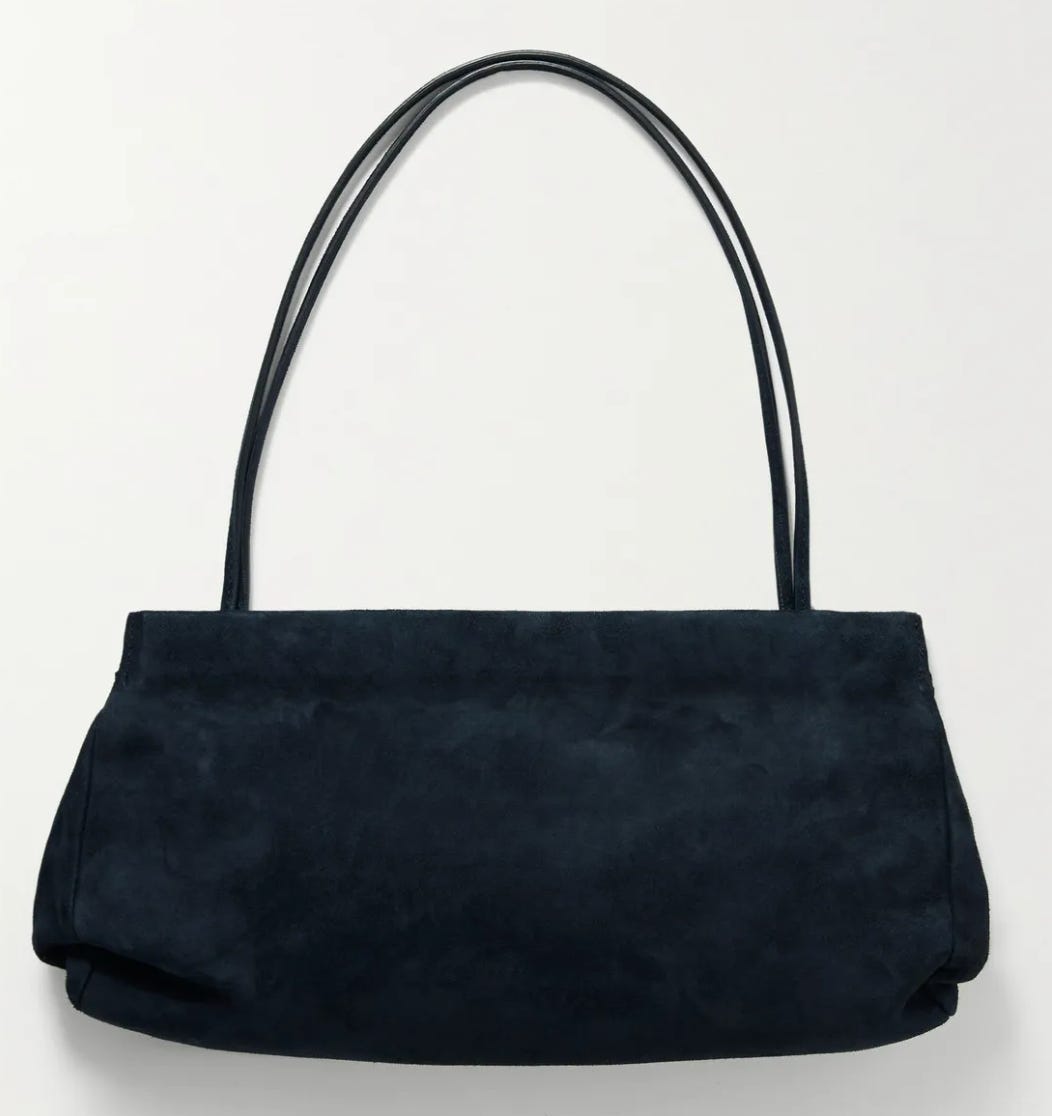The east-west bag was the talk of the town for Fashion Weeks in New York and Paris. We have seen this silhouette in the 2000s, and one could say it’s a throwback to that Y2K era, but actually, its predecessor arrived much earlier, and for good reason.
As discussed in previous posts, in the 1940’s, the war impacted more than just hemlines.
During World War II, materials like leather and metal were rationed. East-West bags required less material than larger, taller bags, making them cost-effective and easier to produce. This was the turning point in history when handbags had advertisements in magazines and catalogs. In old-school terms, this was a trend for limited resources, functionality, and feminity.
The 1950s marked a return to femininity and elegance in fashion of post-war glamour. Women embraced more refined and ladylike styles, and the East-West bag, with its sleek, structured silhouette, perfectly complemented the tailored dresses, full skirts, and polished looks of the time.
Women embraced more refined and ladylike styles, and the East-West bag, with its sleek, structured silhouette, perfectly complemented the tailored dresses, full skirts, and polished looks of the time. In addition, this long silhouette mirrored the cars that were now commercially available.
The 1960s fashion scene embraced modern, clean lines and minimalist designs driven by the Mod movement. The East-West bag's slim, elongated shape perfectly fits that aesthetic, complementing A-line dresses, shift dresses, and structured coats.
Style icons such as Jackie Kennedy, Twiggy, and Brigitte Bardot popularized streamlined and chic accessories, influencing handbag trends. Designers like Gucci and Hermès created iconic East-West styles that made it to the mainstream Sears catalogs.
The East-West made its debut in the 2000s as a result of flip of the oversized bag trend coming off the 1990s. Once it started on the runway with the likes of the Chloé Paddington, Fendi Baguette, and Marc Jacobs Stam Bag, it made its way to commercial retail as seen with the Juicy Couture Baguette. This was also the first generation that cell phones that were still reasonably small, and the understanding was you only needed to carry the essentials (phone, lipstick, one credit card, cash, and keys) when you went out. (See the Yasmena handbag invention by moi for reference…)
The cyclical nature of fashion means that popular silhouettes inevitably return. The East-West bag’s comeback aligns with the current revival of Y2K-inspired trends, which emphasize unique proportions and bold designs.
With the rise of the circular economy and platforms like Depop, Poshmark, and The RealReal, younger consumers are now exposed to silhouettes and styles that perhaps five years ago would not have happened. With Gen Z drinking less, and needing less to go out with the cellphone covering cash, credit, and ID in some cases, it makes sense that the East-West bag would make a comeback now.
As I also have discussed, this is the era for shapes. It its own way, the box bag (as said in the previous post), novelty, and even the East-West, show a means of whimsy that was missed coming off the pandemic. As compensation for the potential recession, you will see these “fun” silhouettes offset by earth tones.
And if this recession is coming, as demonstrated the East-West bag of the 1940s of the time of rations and limited materials, smaller and longer bags potentially use the entire square foot or yard to yield less wastage overall. So - check your history, be inspired by the bags from the last century, and maintain your own DNA to stand out.
Listen to this week’s amazing episode if Handbag Designer 101 with
who shares the must-know fundamentals of branding, competition, and consumer demands—especially in sustainability














